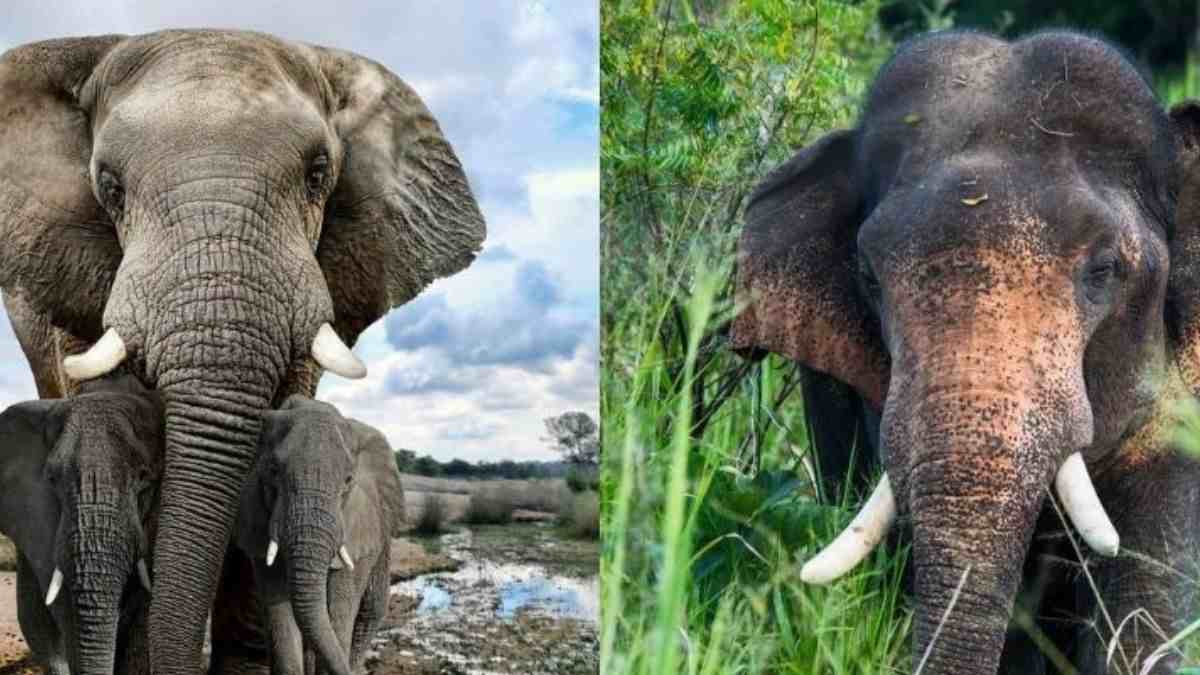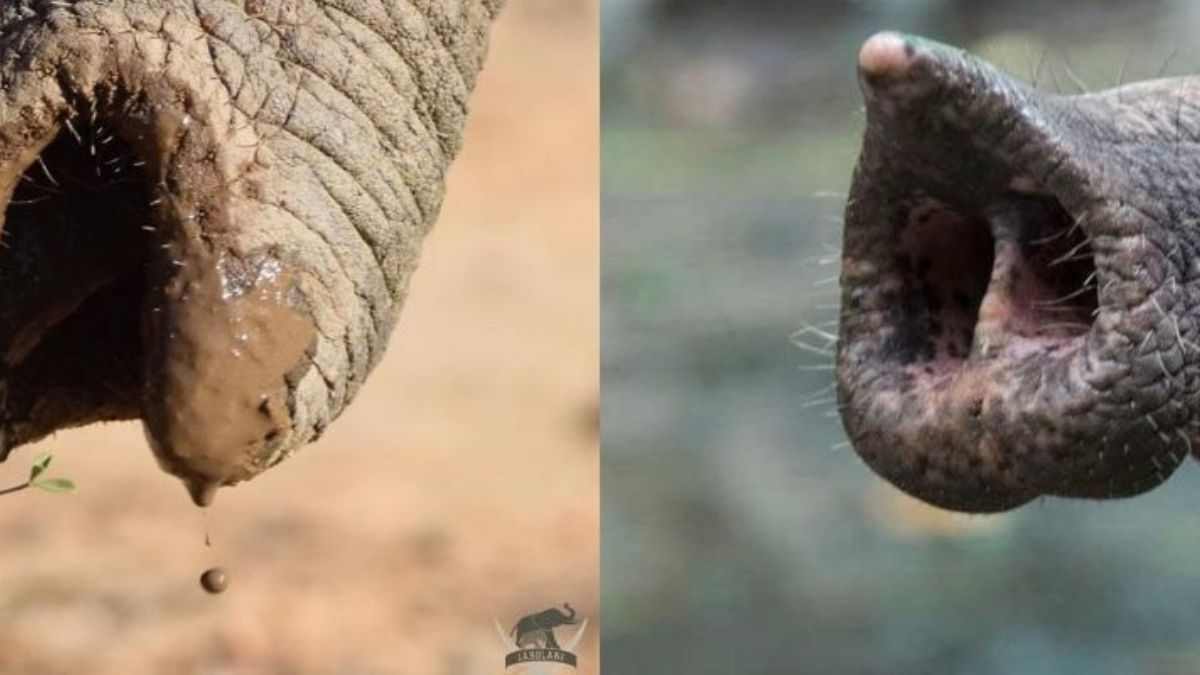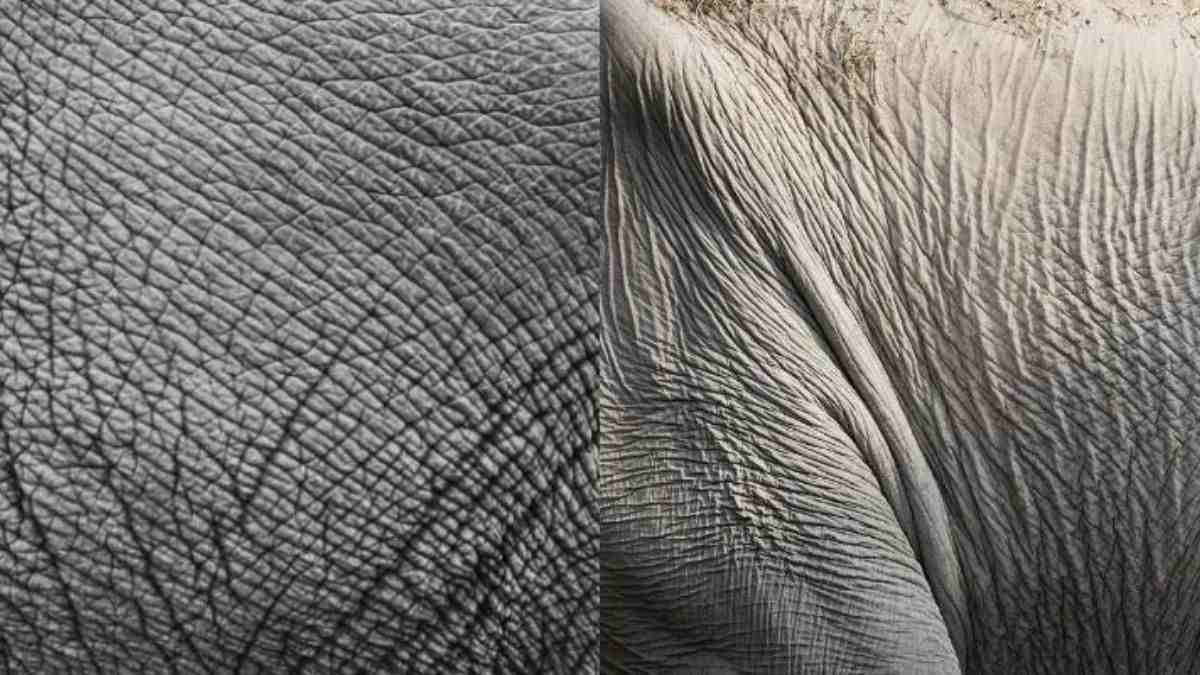The largest land mammals play a vital role as ecosystem engineers. The only surviving members of the family Elephantidae and the order Proboscidea helps to maintain the rich biodiversity of the spaces. Holding significant cultural and symbolic meaning around the world, there are three living species of elephants available in the world, African Bush Elephants, African Forest Elephants, and Asian elephants.
The two species of African elephants are the savanna (or bush) elephant and the forest elephant. They share a very minor difference in size, and the tusks of Savanna elephants curve outwards. Whereas the small forest elephants are darker and their tusks are straighter and downward pointed.
And the different characteristics of Asiatic Elephants and African Elephants are as follows:
Head & Ears
The differences in the appearance of Asian and African elephants are strongly visible, even from a distance. African elephants have fuller, more rounded heads with a single dome shape, whereas Asian elephants have a double arch with a dent running up the center of their head.

Source: safarisafricana
Other than this, the two species have a visible difference in the size of their ears too. African elephants have much larger ears, similar to the shape of Africa, whereas Asian elephants’ ears are smaller and more semi-circular. Although the purpose behind the large ears of elephants is the same, dissipating body heat.
Size and Weight
Just not in the shape but African elephants are larger and heavier than Asian elephants. An African elephant can grow up to 4 meters tall in comparison to Asian males who can reach no more than 3.5 meters.
Also, the noted weight of an African elephant can range between 4,000 to 8,000 kilograms, and that of Asian elephants lies between 3,000 and 6,000 kilograms.
Size of Tusk & its appearances
All African elephants irrespective of gender have tusks, whereas in Asian elephants only male members own tusks and females have rudimentary or under-developed tusks called tushes.
In some rare cases, African elephants are also found without tusks. However, keeping the count balanced, African elephant tusks are bigger than Asian elephant tusks.
Trunk
Elephants use their trunks to drink, store, spray water, and also to blow air to communicate. The African elephant’s trunk has more visible rings on it and is not as hard to touch as of Asian elephant trunk. Other than this, the African elephant trunk.

Source: safarisafricana
An African elephant’s trunk has more visible rings on it and is not as hard to touch as the Asian elephant trunk. The African elephant trunk has two distinct ‘fingers’ that they use to grab and hold objects. In comparison, Asian elephants have only one ‘finger’ at the end of their trunk.
Mouth
Well, it's just not the shape, size, and weight but Asian and African elephants have differences in the shape of mouths too. The lower lips of the African elephant are short and round, whereas Asian elephants have long tapered lower lips.
Other than the lips part, the teeth of elephants also differ from each other, as the African elephant teeth are sloping and that of the Asian elephants are compressed diamond-shaped.
Skin Texture

Source: safarisafricana
The outer skin of Asian elephants’ is smooth and polished whereas, whereas African elephants’ is more wrinkled and have more cracks. Experts say that these cracks on the body store water to balance the body temperature and prevent the animal from dehydration.
Number of Toenails
The difference between the number of toenails in African Forest Elephants, African Bush Elephants, and Asian Elephants are as followed:
- African forest elephants: 5 toenails on the front feet and 4 on the back feet
- African bush elephants: 4 toenails on the front feet and 3 on the back feet
- Asian elephants: 5 toenails on the front feet and 4 on the back feet
Ribs
Yes, the differences in Asiatic and African elephants are just outwards but inwards too. The number of ribs present in African elephants can go up to 21 pairs whereas Asian elephants are surviving with an average of 20 pairs of ribs.
Diet
African elephants feed on tree saplings, and foliage, acting as ecological filters. And Asian elephants consume grass, bamboo, palms, and tree saplings.
Life Span
The longest-living animal elephant is also the longest-living mammal aside from humans. The life expectancy of an elephant differs on their size and physiology:
African Elephants: 70 years
Asian Elephants: 48 years
In a nutshell, the differences between Asiatic and African elephants are in size, weight, and somewhat of features. However, these giant mammals are equally important for the ecosystem and wildlife.
Comments
All Comments (0)
Join the conversation